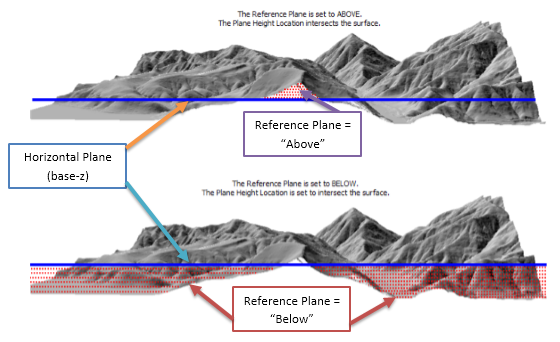Section I: Procurement Methods
1. Procurement of Works
This involves hiring contractors to construct, repair, or maintain infrastructure. It includes small to large-scale civil engineering or building construction activities.
Examples:
-
Construction of a new school or hospital building
-
Blacktopping of rural roads
-
Erection of retaining walls, culverts, or bridges
🛠️ Procurement Method for works are described at bottom section.
🧱 2. Procurement of Goods
This refers to the purchase of physical items or materials necessary for a project or government office.
Examples:
-
Purchase of Hume pipes for drainage
-
Supply of steel parts for bridge construction
-
Buying office furniture or vehicles
📦 Procurement Method for goods are at described bottom section.
📐 3. Procurement of Consultancy Services
Consultancy services are required when expert advice, design, supervision, or reports are needed. These are generally intellectual services, not physical goods or construction.
Examples:
-
Preparation of a Detailed Project Report (DPR) for a building
-
Carrying out an Initial Environmental Examination (IEE)
-
Design and supervision of a hydropower or irrigation project
📋 Procurement Method for Consultancy services are at described bottom section.
🎓 4. Procurement of Other Services
This category covers non-consultancy, non-construction, and non-goods related services, such as logistics, event management, or training delivery.
Examples:
-
Conducting a training program for engineers or contractors
-
Organizing a seminar or workshop
-
Hiring logistics services for field visits
⚖️ Procurement Method for Other services: Up to 5 lakhs by Negotiation. [PPR2064, 87A]
✅ Conclusion
Understanding the correct procurement category and corresponding method is essential for ensuring compliance and successful project delivery. Whether you are a government official, engineer, consultant, or supplier, knowing the distinctions between works, goods, consultancy, and other services will help navigate the procurement landscape more effectively.
📚 References:
-
Public Procurement Act, 2063
-
Public Procurement Regulation, 2064
-
PPMO Guidelines and Standard Bidding Documents
Section II: Download SBD and other docs
Standard bidding document can be downloaded from PPMO-website
Section III: Procurement Method
Procurement Methods for Works
| SN | Procurement Method | Amount | Reference |
|---|---|---|---|
| 1 | Direct Purchase (Letter to standing list contractor) | Up to NPR 10 Lakhs | PPR, 2064 – 11th Amendment, Rule 85 |
| 2 | Sealed Quotation (15 days notice in National Daily) | Up to NPR 20 Lakhs | PPR, 2064 – Rule 84 |
| 3 | National Competitive Bidding (NCB) (30 days notice) | 20 Lakhs to 5 Arba | PPR, 2064 – 12th Amendment, Rules 31 & 31E |
| 4 | International Competitive Bidding (ICB) (45 days notice) | More than 5 Arba | PPR, 2064 – 12th Amendment, Rules 31 & 31E |
| 5 | Force Account (No notice required) | Up to NPR 1 Lakh | PPR, 2064 – Rule 98(3) |
| 6 | User’s Committee (No notice required) | Up to NPR 1 Crore | PPR, 2064 – 11th Amendment, Rule 97 |
| 7 | Beneficiary Group (No notice required) | Up to NPR 5 Crore | PPR, 2064 – 11th Amendment, Rule 97(A) |
Procurement Methods for Goods
| SN | Procurement Method | Amount | Reference |
|---|---|---|---|
| 1 | Direct Purchase | Up to NPR 10 Lakhs | PPR, 2064 – 11th Amendment, Rule 85 |
| 2 | Sealed Quotation (15 days notice in National Daily) | Up to NPR 20 Lakhs | PPR, 2064 – Rule 84 |
| 3 | Catalogue Shopping (7–15 days notice) | For heavy equipment, vehicles, etc. | PPR, 2064 – Rule 31B |
| 4 | National Competitive Bidding (NCB) (30 days notice) | 20 Lakhs to 5 Arba | PPR, 2064 – 12th Amendment, Rules 31 & 31E |
| 5 | International Competitive Bidding (ICB) (45 days notice) | More than 5 Arba | PPR, 2064 – 12th Amendment, Rules 31 & 31E |
Procurement Methods for Consultancy Services
| SN | Procurement Method | Amount | Reference |
|---|---|---|---|
| 1 | Direct Purchase (National) | Up to NPR 5 Lakhs | PPR, 2064 – 11th Amendment, Rule 85 |
| 2 | RFP from Standing List (15 days response time) | Less than NPR 20 Lakhs | PPR, 2064 – Rule 72 |
| 3 | EOI and RFP (30 days response time) | Above NPR 20 Lakhs | PPR, 2064 – 11th Amendment, Rule 70 |
| 4 | International Consultant | Above NPR 15 Crore | PPR, 2064 – 11th Amendment, Rule 70 |
Click here to watch Video Tutorial (How to fill Standard bidding document (SBD) | Part - 1)
Click here to watch Video Tutorial (How to fill Standard bidding document (SBD) | Part - 2)









